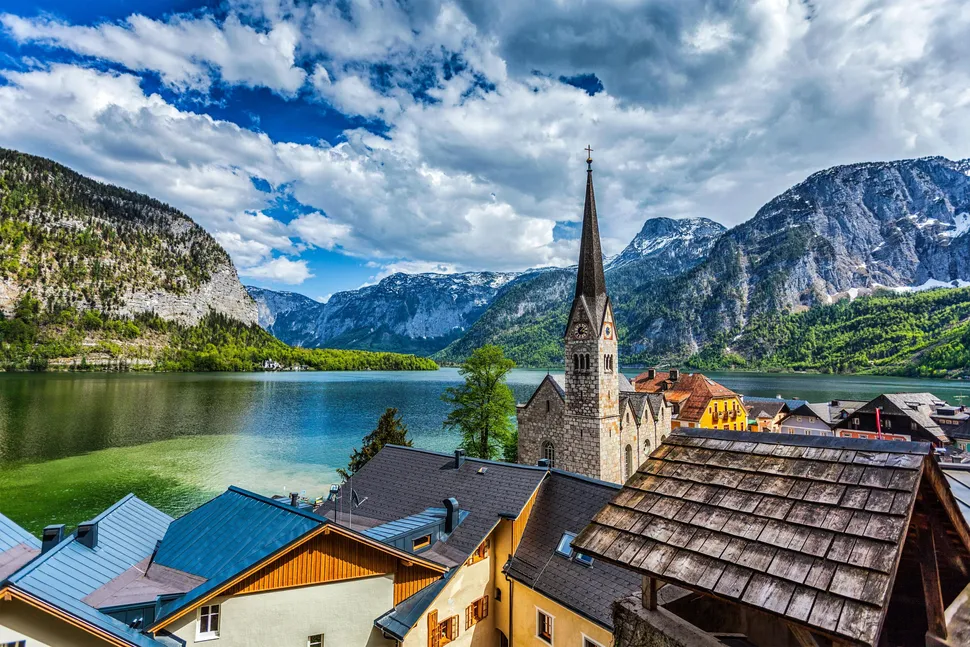Oguz Kaan Kısa · Feb. 1, 2021

In the period following the Thirty Years' War, Austrian politicians tried to avoid military conflicts. III. Upon Ferdinand's death, his middle son Leopold was elected emperor despite the opposition of France (1658). The pro-French West German princes, led by the archbishop of Mainz, formed the Rhine League. Austria, which joined the war between Poland and Sweden to prevent the fall of Poland, prevented the Swedes from advancing in Germany. During the Thirty Years' War, the war that started in the Ottoman front because of Erdel in the 1660s, ended with the Vasvar Treaty and Erdel's rule was left to the pro-Ottoman Mihâly Apafi (1664). A year later, the second period of division of the Habsburg territories (1564-1665) came to an end, with Tyrol and Vorlande falling under Emperor Leopold.
Austria, once the potency of power of the great Austro-Hungarian Empire, was reduced to a small republic after its defeat in World War I (28 Jul 1914 - 11 November 1918).
Since there is no written source about the Celts from the mentioned period, we can only get information about this period from archaeological findings. In the 1840s, a cemetery was discovered by a miner in Hallstatt, Austria. When the tomb was excavated, burials such as swords, jewelry and various sizes of storage containers emerged. Apparently made around 700 BC, that is, at the beginning of the Iron Age for Western Europe, some of the items from the burial were made of bronze, though most were iron. Archaeologists also found other items from the same period, such as wooden tools, woolen clothes, and even fur berets and leather bags, that were preserved by salt until that day, in ancient salt mines near the cemetery.
Vienna was involved in nine major wars in the 19th century. The average life expectancy in Vienna in the 19th century was about 38 years.
A Mozartkugel,is made out of peanuts made of small, round sugar confectionery, marzipan and nougat topped with dark chocolate. Originally known as Mozart-Bonbon, it was created in 1890 by Salzburg confectioner Paul Fürst (1856–1941) and named after Wolfgang Amadeus Mozart. Handmade Original Salzburger Mozartkugeln has been produced by Fürst's descendants to this day, while similar products have been developed by numerous confectionery manufacturers, often industrially produced.
One of Vienna's most striking and must-see places is the Art History Museum. This museum, which must be seen by those who are interested in decorative and fine arts, has features that reflect the texture of the city in Vienna, which is called the capital of fashion and art. It was opened for the first time in 1891 by order of Emperor Franz Joseph I. The museum is located next to the Royal Palace.
The Austrian National Library, located in Vienna, completed in 1726, is one of the world's leading libraries. The library has a collection dating back to the 14th century and today houses more than 2.5 million books.
Austria is also Europe's number one in organic farming, with an emphasis on quality rather than quantity. The country supports the reduction of chemical fertilizers and pesticides.
Among the European countries that separate the largest agricultural land for organic products, Austria ranks first. More than 20,000 farmers here, in other words one in six Austrian farmers, are involved in organic crop farming. In every five hectares of arable land, products suitable for organic needs are grown. These organic products grown in Austria have carried a quality stamp since 1995.
Austria has 9 federal states, namely Vienna, Burgenland, Carinthia, Lower Austria, Upper Austria, Salzburg, Styria, Tyrol and Vorarlberg.
Lake Neusiedl (German: Neusiedler See; Hungarian: Fertő tó) is the second largest closed basin in Europe, located between Austria and Hungary. The lake is a total size of 315 square kilometers, 240 square kilometers of which belongs to Hungary and 75 square kilometers to Austria.
Austria has a strong reputation for renewable energy - from hydro and wind power to solar, geothermal, tidal and biomass energies. Companies are frequently world champions in the niche field and offer highly customized and customized solutions. Programs targeting higher energy efficiency are also important.
Football, volleyball, basketball, ballet, and dance are among the most popular sports activities in the country.
2/3 of Austria is covered with forests and meadows. Forests make up 2/5 of the country. As such, Austria is one of the most densely forested countries in central Europe.

 Back
BackLet us find your dream university.
